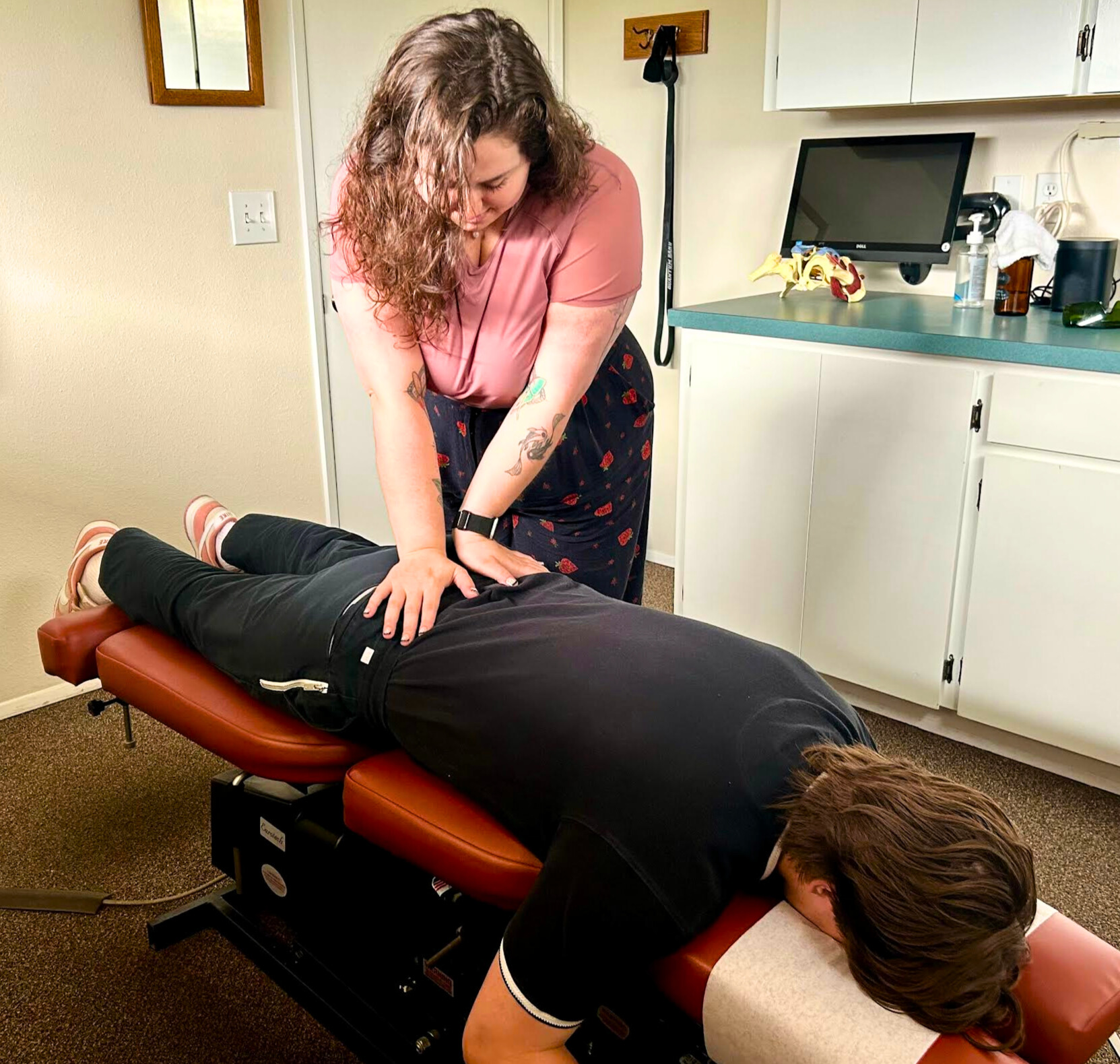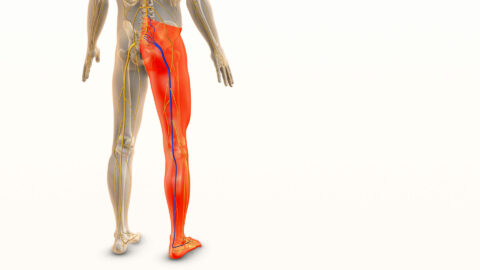
Sciatica is one of the most common, yet misunderstood, types of pain. As many as 40% of people will suffer from it during their life, and it becomes more frequent as you age. While sciatica may resolve on its own, it frequently becomes a chronic problem. Find relief from sciatica pain with chiropractic care at Hosmer Chiropractic Health, where treatment is highly effective in alleviating pain and preventing future flare-ups.
What is sciatica?
Sciatica is a symptom rather than a condition. Many people use “sciatica” to describe any pain in the lower back or legs, but sciatica specifically refers to pain caused by inflammation and compression of the sciatic nerve, the longest and widest nerve in the body. The sciatic nerve extends from the lower back, through the buttocks, down the leg, and into the toes. It is composed of five nerve roots that exit the lumbar spine and converge in the pelvis. From there, the sciatic nerve divides into numerous branches that serve the muscles, joints, skin, and other tissues in the legs and feet.
What are the symptoms of sciatica?
Sciatica is characterized by pain that radiates from the lower back through the buttocks and down one leg. While many individuals with sciatica have a history of lower back pain, sciatica can occur with or without accompanying back pain. The pain associated with sciatica can range from mild to debilitating.
A severe sciatica flare-up can affect the entire length of the sciatic nerve, from the back of the thigh to the calf and foot. However, sciatica may also manifest as pain in specific areas along the nerve pathway, including the buttocks, knee, or calf. Most commonly, sciatica causes pain in your sit bone on the side of involvement, along with an achy/cramping feeling in your hamstring. Sciatica sufferers will frequently also experience “tight hamstrings”.
What causes sciatica pain?
Sciatica can arise from various issues, such as a herniated disc, spinal stenosis (narrowing of the spinal canal), or muscle spasms. It is therefore important to have an accurate diagnosis so that treatment matches the underlying cause.
Our most common cause of sciatica is entrapment (compression) of the sciatic nerve as it exits the pelvis. Tightness in the piriformis (a flat, pear-shaped muscle in the buttocks) and other deep hip rotators causes the nerve to become inflamed and irritated. This may arise due to prolonged compression with sitting, tightness in the hips and pelvis, or an acute injury. Over time, damaged nerves can limit joint movement and impair the lubrication of the intervertebral discs, which are the gel-like cushions between each vertebra. Dehydrated or unhealthy discs may tear or rupture, potentially leading to a herniated, bulging, or ruptured disc. If a herniated disc presses on the sciatic nerve, it can worsen irritation and possibly cause irreversible nerve damage if not promptly addressed.
How is sciatica treated?
Sciatica treatment starts with an accurate diagnosis, which helps to determine the cause of the nerve irritation. Once an accurate diagnosis has been made, treatment includes chiropractic adjustments to restore joint mobility, soft tissue treatment including Active Release Techniques, and stretching and strengthening exercises for home. We frequently also include Class IV laser, which speeds up the healing process and relieves pain.
Short-term relief for sciatica pain can be achieved through various methods, including applying cold compresses or heat to the affected area to reduce inflammation and relax muscles. Over-the-counter pain relievers like ibuprofen or acetaminophen can help manage pain. Gentle stretching and physical therapy exercises can alleviate nerve compression and improve mobility. Resting in a comfortable position and maintaining good posture can also reduce discomfort.
Video: Relieve sciatica discomfort and tight hips with the active figure 4 stretch.
For effective long-term relief from sciatica, contact Hosmer Chiropractic Health by calling the office at 503-227-2279 or booking an appointment online.
